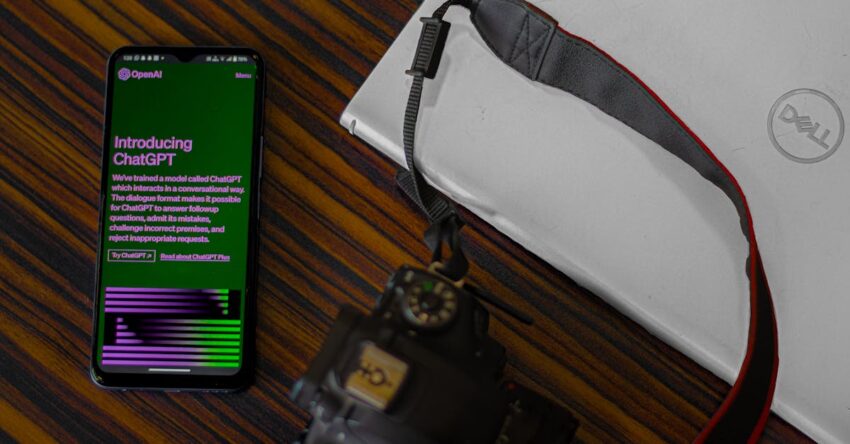Did you know that over 90% of smartphone users have tried some form of self-diagnosis on their phones? It’s true! However, not every diagnostic tool works as promised, especially when it comes to AI iPhone diagnostics. You might find that these AI tools for iPhone repair seem like a quick fix, but they often miss crucial hardware issues lurking beneath the surface. Before you dive into using another smartphone diagnostic app, it’s important to understand why these automated iPhone troubleshooting methods sometimes fail you.
Imagine you’re following screen instructions diagnosis only to find that the app detects issues which aren’t real, or worse, it doesn’t notice a serious hardware component fault. It can be frustrating when AI technology in phone repair doesn’t meet your expectations, leaving you wondering if you’ll ever find an app that lists results accurately. Identifying the pitfalls of AI diagnostic tools can save you plenty of headaches, and even more time, in your search to resolve machine learning concerns with your iPhone issues.
Stay with me to uncover how you can sidestep these common AI pitfalls and keep your iPhone running smoothly. You’ll gain insights on what actually works in diagnosing and fixing your device. Are you ready to make your tech troubleshooting more effective? Let’s dive in!

Photo provided by Shantanu Kumar on Pexels
Within the story
Understanding AI iPhone Diagnostics
When exploring AI tools for iPhone repair, you might wonder how these technologies help fix your phone. Many such tools use smart systems to identify problems quickly. They look at your phone’s data to figure out what’s going wrong. However, it’s important to know what these systems can and cannot do. Sometimes, they need a bit more information to work effectively. Have you ever wondered why your phone’s diagnostic app might not always provide the right answer? This brings us to understanding common challenges.
Common Challenges in AI iPhone Diagnostics
Not all smartphone diagnostic apps are created equal. When using these apps, you might notice that they sometimes miss the mark. One reason is the wide variety of phone models and their specific needs. Additionally, apps may not always keep up with the latest software updates. This can lead to errors in identifying problems. The technology behind these apps might not adapt quickly enough to changes in phone technology, leading to misdiagnoses. Does your app sometimes fail to find the issue? Let’s explore why this happens.
Reasons AI Diagnostics Fail
There are multiple reasons AI diagnostics might fail. First, diverse hardware and software issues can confuse these systems. Each iPhone model is different, and not all apps can handle this diversity. Secondly, some systems lack the advanced technology to adapt to new phones or updated software. This lack of adaptive AI technology in phone repair can be a significant hurdle. Moreover, inconsistent data collection can further complicate automated iPhone troubleshooting. When apps can’t gather the right data, they might fail to diagnose the problem accurately.
Furthermore, inconsistent data can come from varied user behavior and different phone environments. Sometimes, what works for one phone doesn’t work for another, even if they’re the same model. These factors can lead to results that aren’t as reliable as you’d hope.
How Machine Learning Enhances AI iPhone Diagnostics
Using machine learning for iPhone issues can greatly improve diagnostic accuracy. Machine learning helps systems learn from past mistakes. For instance, if a phone encountered a similar problem before, the system can recognize it faster. This learning process means less guessing and more accurate solutions. But how can you ensure the system is learning effectively? Regular updates are crucial. Make sure your diagnostic tools are always up to date to enjoy the full benefits of machine learning.

Photo provided by Google DeepMind on Pexels
Strategies to Avoid Failures
To avoid failures, integrate updated AI tools for iPhone repair. Make it a habit to update your diagnostic apps regularly. This ensures they have the latest information and can address issues more effectively. Another critical strategy is to enhance automated iPhone troubleshooting processes. By doing so, you’ll ensure that the systems are more adaptable and accurate.
Additionally, consider using tools that allow you to input specific symptoms. This can help the app focus on the areas you’re concerned about. Following these strategies might just save you from a trip to the repair shop and keep your phone running smoothly.
Wrap-Up and Next Steps
AI tools for smartphone diagnostics offer a quick way to identify issues, but they are not perfect. Understanding their limitations helps you make informed decisions about repairs. By knowing common pitfalls, you can use these tools effectively. This knowledge boosts your confidence in maintaining your device’s health.
Start by evaluating the diagnostic app you currently use. Consider its features and check for updates that might improve its accuracy. Also, remember to manually check hardware components that AI might miss. These small steps ensure your device stays in top shape and reduces the chance of missed issues.
Now it’s time to take action. Regularly update and test your diagnostic tools and take note of any findings. By doing this, you ensure your iPhone remains reliable and efficient. Trust your instincts and maintain your phone with care. You’ve got this!
